Travelling with an actual map? Those were the golden days
Remember travel in the pre-internet 1960s? The jet age was just taking off and the EH Holden was our bestselling car. It was a time of travellers’ cheques, aerogrammes and reverse-charge phone calls. Look how far we’ve come.

Sixty years is a long time in the evolution of how we travel. Here, we delve into the past to see just how far we’ve come.
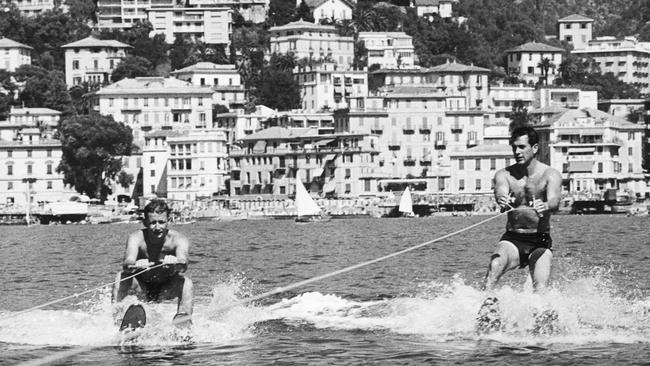
DESTINATIONS
THEN: Travel could be a free-wheeling affair in the swinging 60s. Adventurous types took to the road armed with a hitchhiker’s thumb and a backpack full of jeans, hopes, dreams – and an actual map. Guide books were scarce – Frommer’s was the go-to; Lonely Planet didn’t launch until 1973 – so “winging it” was the modus operandi for those with time on their hands. For Australians doing their obligatory stint in Blighty, safety in numbers could be found with the fledgling Contiki Tours, launched in London in 1962 by Kiwi John Anderson. Its bus-party packages across the continent were rapidly taking shape as the young person’s equivalent of the European grand tour. Older travellers, families and less spontaneous types relied heavily on travel agents to turn their holiday plans into reality. For most, overseas travel was for the wealthy. ABS statistics reveal almost half of all departures from Australian shores in 1964 were still by ship. Air travel was rarefied and those flying for business were overwhelmingly male – 25,000 Aussie men, compared with 2500 women, according to the ABS. Those same figures reveal our top five destinations for short-term trips, in descending order, as New Zealand, Britain and Ireland, Italy, Papua New Guinea (an Australian territory until independence in 1975) and Singapore. Tokyo hosted the Olympic Games in 1964. Could this sporting extravaganza have planted the seed of what was to come for the country as a tourism hotspot? Sydney dominated international air travel, not surprisingly since Melbourne didn’t get an international airport until 1970. Brisbane had to wait another 18 years. The NSW capital accounted for almost 80 per cent of departures. This was a time of travellers’ cheques, aerogrammes, poste restante and reverse-charge phone calls.
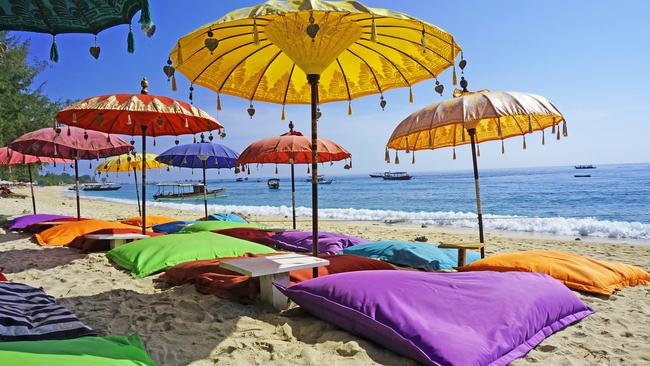
NOW: What a difference six decades make. No longer the trip of a lifetime, overseas travel has become, for many, an annual event, if not an entitlement. Witness the hordes, probably including your neighbours, who converged on Athens and the Amalfi Coast last northern summer. Italy remains a perennial favourite, and Bali is still topping the pops but Japan is booming thanks in no small part to the weak yen. Asia, in general, is undergoing a resurgence in popularity this year. Webjet’s latest figures put the top five places booked for travel this winter as Bali, London, Queenstown, Auckland and Fiji, but Singapore, Tokyo, Bangkok and Phuket are close behind. Need inspiration? Look no further than your phone. Instagram, TikTok and YouTube are filled with influencers make a living (cynics might say freeloading) by spruiking images of themselves in swish hotels and desirable destinations. In this age of information overload, special-interest topics from street food and antiques markets to skiing and scuba diving all have terabytes of material posted online by their travelling proponents. We trawl the internet for info then book most of our flights, cruises, hotels and tours online. Guidebooks are preferred in digital form, and translation apps mean you can converse with locals in virtually any corner of the globe. The final frontier, space, is already the realm of the uber rich. Meanwhile, more humble mortals hitch up their hi-tech mobile homes to monster utes to join the great grey-nomad migration around Australia.
PENNY HUNTER

ACCOMMODATION
THEN: Hand in glove with the expansion of air travel, the 1960s welcomed the birth of the modern-day “international” hotel. The opening of Melbourne’s boldly modern Southern Cross Hotel in 1962, designed by local and Los Angeles-based architects, was a nationally important event, broadcast live. The Beatles stayed, so did Judy Garland. Sydney’s first true five star, The Wentworth, opened four years later. For all this, the 60s remained the preserve of the motel: thrilling breakfast hutches (I remember collecting the little sachets of Vegemite) and if you were very lucky a telly and coin-operated vibrating bed. Decor was “post-war international style” – modernist, bright and wonderfully optimistic. The newly arrived big city hotels brought extra glam and comfort, such as airconditioning, piped music, TV as standard, overnight shoeshine, morning newspapers. Minibars were around the corner. Keys were keys, not cards, check-in was via a hand-written register. No credit card required (they didn’t exist in Australia). How many Mr and Mrs Smiths must fill those dusty tomes, I wonder. Landlines were the only means of communicating with reception and the world, and they were essential for wake-up calls. They also turned a tidy profit for hotels going forward, with incredibly expensive international charges. Paper and postcards were provided for writing home; ashtrays essential. The hotel gym? Pure science fiction.
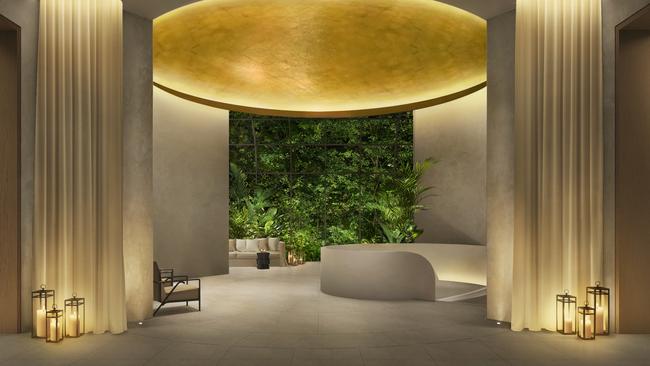
NOW: Technology is central to the modern-day hotel experience, which features fast free wi-fi, oversize TVs (disguised behind gilt frames in posh hotels) and a paper-free environment. The compendium is contained, Moses-like, on a tablet that also controls the lights and blinds and whistles up room service. Even the electronic key card is disappearing, with rooms accessed by code or phone. Check-in is increasingly remote, and reception desks are shrinking or disappearing. Overpriced minibars are becoming less important, unless they are artisanal, and in smarter hotels, groaning with luxury bevvies. A little fridge is still crucial – for milk, for the now mandatory coffee-pod machine. We want comfort and choice, which means branded beds, pillow menus, zillion-thread-count sheets and bath concierges. Lobby lounges are live/work spaces, with everyone attached as though by umbilical cord to a device. Hotel design has become its own architectural niche, with its own superstars (Ian Schrager, Jacques Garcia, the late Kerry Hill). A plethora of international brands – corporate, lifestyle, family-friendly, design-driven – make it easy to choose lodgings that are perfectly aligned with your own aesthetic and budget. In a full-circle moment, a tremendous nostalgia for the motels of the 60s and 70s is resulting in the resurrection of select properties, transformed into mid-century design havens.
CHRISTINE McCABE

CRUISING
THEN: Some of the best-known lines that sailed to and from Australia in the 1960s were Chandris (later to become Celebrity Cruises), Lauro, Matson, Shaw Savill, Sitmar and P&O-Orient. Sitmar and P&O-Orient Lines eventually became part of P&O Cruises, in turn owned by the giant Carnival Corporation, which recently announced it will close the Australian operation in 2025 after 93 years. More than a million “Ten Pound Poms” sailed from Britain to Australia on P&O ships between 1947 and 1972, a government-subsidised initiative that helped keep the line afloat when mass air travel began overtaking sea voyages. Many passengers recall journeys that took several weeks on ships that were far smaller than those cruising the world today. Take SS Canberra, a frequent visitor to Australia that was built in 1960; it was 250m long and carried 548 first-class passengers and 1650 in tourist class. The world’s biggest cruise ship in 2024 is Icon of the Seas. At 365m long, it accommodates 7600 guests and 2350 crew over 20 activity-packed decks. Line voyages – travelling from one point to another – were more common than pleasure cruises, but there was plenty of fun (of the DIY type) to be had. Passengers sailed in first or tourist class and passed the time playing games such as shuffleboard, quoits and cards, entering talent shows, fancy-dress parades and water sports competitions, dancing to the ship’s orchestra, drinking cocktails, and dining in (usually) one main dining room at two fixed sittings. Formal dress was required for dinner and menus were extensive – self-service buffets and 24/7 eateries were yet to make their appearance.

NOW: Modern-style cruising began with the advent of lines such as Princess Cruises (1965), Norwegian Cruise Line (1966), Royal Caribbean (1970) and Carnival Cruise Line (1972). They built ships with shallower draughts that allowed access to more ports, fares became more affordable and the TV show The Love Boat, which aired between the 70s and 80s, introduced cruising as a fun holiday to a much broader demographic. Fast-forward to 2024, and cruise ships continue to evolve. Ocean-going ships have become both bigger (like gigantic floating resorts) and smaller (boutique hotel-type ships for well-heeled, well-travelled guests). Expedition voyages were once the preserve of explorers and scientists, but that changed in 1966 when Lars-Eric Lindblad became the first operator to take paying guests to Antarctica. Now, rugged Russian expedition vessels have given way to luxury ships that are equipped with everything from fine-dining restaurants and butler service to helicopters and mini-submarines. River cruising is an even more recent development, variously estimated to have started in the late 60s or 70s and still expanding. Ships on Europe’s major rivers conform to the same size (135m long, three decks high) because they need to pass under bridges and through locks, but the experience offered across a raft of operators varies considerably. Today’s passengers demand choice, entertainment, sustainability and connectivity. Some travellers may long for simpler times but does anyone miss shared bathrooms and poky cabins furnished with bunk beds? I didn’t think so.
SALLY MACMILLAN

MOTORING
THEN: Road trips in 1964 Australia were hedonistic and thrilling adventures, with effectively no speed limits, no seatbelts and certainly no policemen holding radar guns (Victoria introduced the first speed camera in 1985). Drivers were most likely behind the wheel of Australia’s bestselling car at the time, the EH Holden, which had brakes, but not good ones, and cross-ply tyres with all the grip of a cat on linoleum. Nor did it have crumple zones or power steering. Holden launched the model in 1963 and shifted 250,000 units in just 18 months, making it the fastest-selling car of all time in Australia (in comparison, in 2012 Holden sold 30,000 Commodores). Windows were furiously wound down in summer because airconditioning was not an option, and you’d be simmering in a puddle of sweat on the slick vinyl bench seats. NSW had a “prima facie limit” of 80km/h in rural areas (the state set a limit of 56km/h for city streets in 1964), but police would enforce it only if they decided your speed was “excessive or dangerous”. There was a kind of Mad Max-ness about the road toll in 1964. With a national population of just over 11 million, 2966 people died on our roads. That’s a death rate of 26.6 per 100,000 head of population; by 2023 that rate had fallen to 4.8 (or 1266, out of a population of 26.6 million). Seatbelts, first made compulsory in 1970 in (you guessed it) Victoria (it was the first government in the world to do so), were a hell of an invention. In short, driving was hugely dangerous compared with today, but it was how we holidayed anyway, lolling across the back seat while our parents – who’d possibly had a few drinks (random breath testing wasn’t introduced until 1976, in Victoria of course) – argued over a paper map. And it was cheap; petrol was about 8c a litre.

NOW: Australians might have had a love affair with the EH Holden back in 1964, but today we tend to buy multiple cars, and the bigger the better. In the 60s, Australians were buying about 400,000 cars a year, and choosing between fewer than a dozen mainstream brands. Today we have more than 60 marques competing for sales of 1.2 million a year. While all of our relatively noisy passenger cars in 1960 were running on leaded fuel (phased out in Australia on January 1, 2002), today it’s possible to drive in eerie silence while producing zero emissions thanks to the advent, and increasing popularity, of electric cars (just over 7 per cent of new-car sales were electric in 2023, up from 3 per cent the year before). Not only do we take passive safety features such as crumple zones and airbags (first arriving here in the early 90s) for granted, but modern cars have a feast of “active” safety features, such as automatic emergency braking, traction and stability control, and even lane-keeping assist. If you dare to visit the US and hire a full self-driving-equipped Tesla, you won’t even need to drive, as these cars have an Autopilot mode that can negotiate freeways, intersections and busy streets, all with no input from you. In San Francisco, you can jump in a fully autonomous taxi. Enthusiasts might well prefer the roads of 1964 to the non-driving ones of tomorrow.
STEPHEN CORBY

AVIATION
THEN: The jet age was just beginning in 1964, providing geographically challenged Australians with access to other countries in a matter of hours rather than days. Qantas had become the first non-American customer of Boeing 707s, known as V-jets, which could fly above the weather, slicing 10 hours off the three-stage trip from Sydney to San Francisco via Fiji and Hawaii. Instead of 26 hours, the flight took 16 hours with 104 guests on board, including 20 in first class and 84 in economy. Seats were reasonably roomy with 86cm of pitch in economy, and 106cm at the pointy end. With the V-jets featuring a “kitchen in the sky”, more substantial meals were cooked and served on board, including filet mignon Diane and coq au vin in first class. Back in economy it was sandwiches and cups of tea from a Thermos. Qantas’s around the world network included San Francisco and three routes to London – the Kangaroo route via Asia and Europe, the Southern Cross route via the Pacific Ocean, and the Fiesta route, via Tahiti, Mexico and the Caribbean. The Dutch East Indies Company, British Overseas Airways Corporation and Tasman Empire Airways were about Qantas’s only competition. On the domestic front, the Menzies government’s two-airlines policy restricted interstate flights to Trans Australia Airlines (TAA) and Ansett-ANA with both carriers even introducing jet aircraft, Boeing 727-100s, on the same day in 1964.
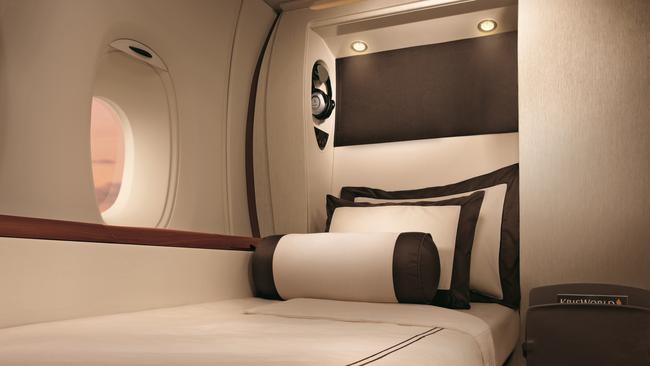
NOW: Non-stop flights to almost anywhere in the world are what travellers have come to expect of today’s airlines, with no fewer than 60 carriers operating on international routes to Australia. Double-aisle jets ranging in size from the sleek Boeing 787 to the enormous A380 fly into the major airports daily, providing up to four cabin options for passengers based on how much they are willing to pay. While first and business class seats have added more leg room and even lie-flat beds, in economy seat pitch has shrunk to a mere 81cm, or a squishy 76cm in low-cost carriers. A multitude of other features have been added to the inflight experience over the years thanks to fierce competition among airlines. Seatback screens provide almost endless entertainment for all on long haul flights; many airlines offer inflight wi-fi to remain connected, then there are premium cabin bars and even shower suites on Emirates’ A380s. Hot meals tend to be standard in every cabin albeit of varying quality, and special lighting and lower cabin pressure promise to relieve the effects of jet lag.
ROBYN IRONSIDE

PACKING
THEN: In terms of airline cabin baggage, so-called “beauty” or “vanity” cases were all the rage for female travellers in the 60s. These would hold makeup, spare nylon stockings and perhaps cigarettes, while most chaps made do with a briefcase or duffel bag for their change of shirt and cigarettes (you could light up aboard domestic flights until 1987; the smoking ban on international services came in 1996). Checked-in luggage would be luxuriously huge but minus wheels and pull-along handles; such “rolling bags” didn’t make their entrance until the 70s. Flying was a proper event in the 60s; passengers dressed up and packed for all contingencies. Silk-lined Samsonites were considered the epitome of jet-set chic and my mother always flew with a hairdryer and a series of hats, in case she might meet royalty or suddenly be invited to a wedding. Casual clothing, such as jeans or shorts, would never have made the cut aboard a plane. But synthetic “leisure wear” and “gadgets” were on the horizon, as were luxuries such as hotel dressing gowns and slippers. On road trips, it wasn’t uncommon for roof racks to be filled with bags and supplies such as towels and bed linen for holiday house lettings. Carefree resorts were still a rare and exotic commodity and my parents, like many of the era, were very suspicious of unsavoury motels and what might have gone on between the sheets.

NOW: Packing light and keeping it simple is today’s mantra. Larger aircraft and more overhead locker storage make it easier to fly with just a carry-on bag for short jaunts. Leading suitcase manufacturers have perfected products with an origami-like series of pockets and zippered compartments and advances in lightweight materials make portability much easier. Most of us go for the wash-and-wear approach with clothing and take a few emergency layers in case of unpredictable weather. Hefty books have been replaced by Kindles, iPads and smartphones. Few travellers show off in their best wardrobe items, but business and first-class airline pyjamas are so coveted that they sell well on merchandise sites such as eBay. Travel has become commonplace and affordable; and while style and sophistication may have flown out the window, the casual approach should continue to be all the rage. Cruising is the one exception; invest in a steamer trunk and pack the tux or ball gown for those formal evenings.
SUSAN KUROSAWA
What do you remember about travel in the 1960s? Leave your comments below.


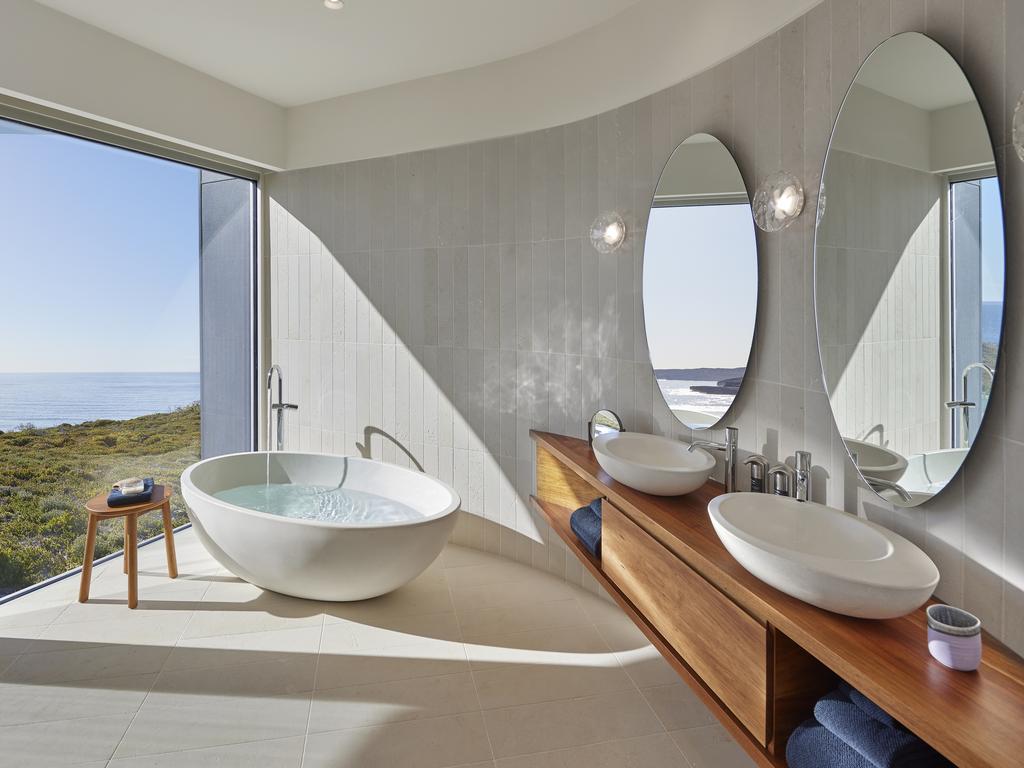
To join the conversation, please log in. Don't have an account? Register
Join the conversation, you are commenting as Logout